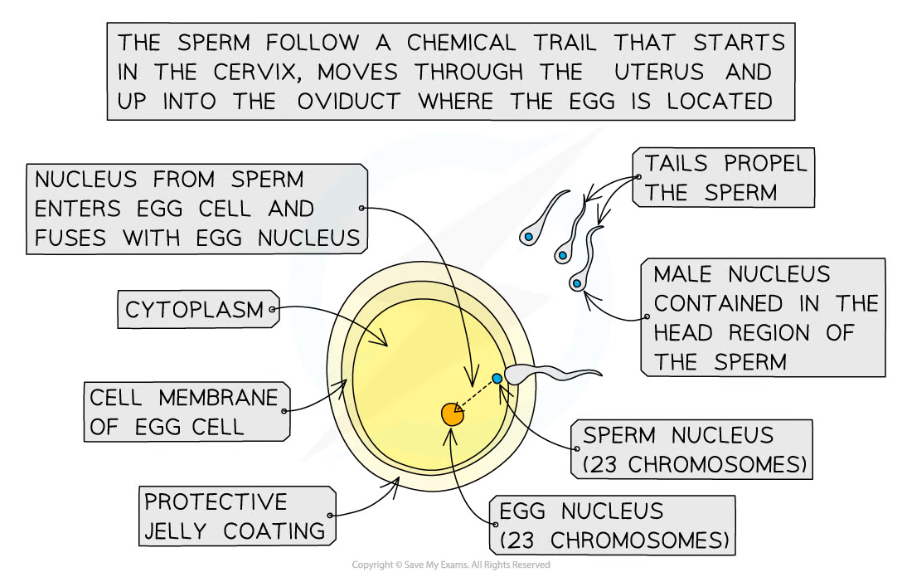- 翰林提供学术活动、国际课程、科研项目一站式留学背景提升服务!
- 400 888 0080
Edexcel A (SNAB) A Level Biology:复习笔记3.3.2 Fertilisation in Mammals
Fertilisation in Mammals
- During sexual intercourse, semen is ejaculated high up into the vagina of the female, near the cervix
- The sperm cells then follow a chemical trail released by the egg cell and travel up through the cervix to reach the uterus (the womb)
- The sperm cells then travel into the oviduct containing the egg cell
- If a sperm cell meets the egg cell in the oviduct, fertilisation can occur
- This is most likely to occur 1-2 days after the female has ovulated (i.e. released an egg cell from one of her ovaries into an oviduct)
- Fertilisation is the fusion of the nuclei from a male gamete (sperm cell) and a female gamete (egg cell)
- During fertilisation, the head of a sperm cell releases enzymes that digest a path through the protective outer layer of the egg cell (the zona pellucida), allowing the sperm to pass through the egg cell membrane
- This process is known as the acrosome reaction
- Once this occurs, the egg cell immediately releases the contents of vesicles known as cortical granules into the space between the egg cell membrane and the zona pellucida
- The chemicals contained within the cortical granules cause the zona pellucida to rapidly thicken and harden, preventing any more sperm cells from entering, ensuring only one sperm cell can fertilise the egg cell
- This process is known as the cortical reaction
- During fertilisation, the head of a sperm cell releases enzymes that digest a path through the protective outer layer of the egg cell (the zona pellucida), allowing the sperm to pass through the egg cell membrane
- The nucleus of the sperm cell then enters the egg and fuses with the nucleus of the egg cell
- When the male and female gamete nuclei fuse, they become a zygote (fertilised egg cell)
- This zygote contains the full 46 chromosomes (23 pairs of chromosomes), half of which came from the father and half from the mother
- The zygote divides by mitosis to form two new cells, which then continue to divide like this until an embryo is formed after a few days
- Cell division continues and eventually many of the new cells produced become specialised to perform particular functions and form all the body tissues of the offspring

The process of fertilisation in mammals
转载自savemyexams

早鸟钜惠!翰林2025暑期班课上线

最新发布
© 2025. All Rights Reserved. 沪ICP备2023009024号-1








